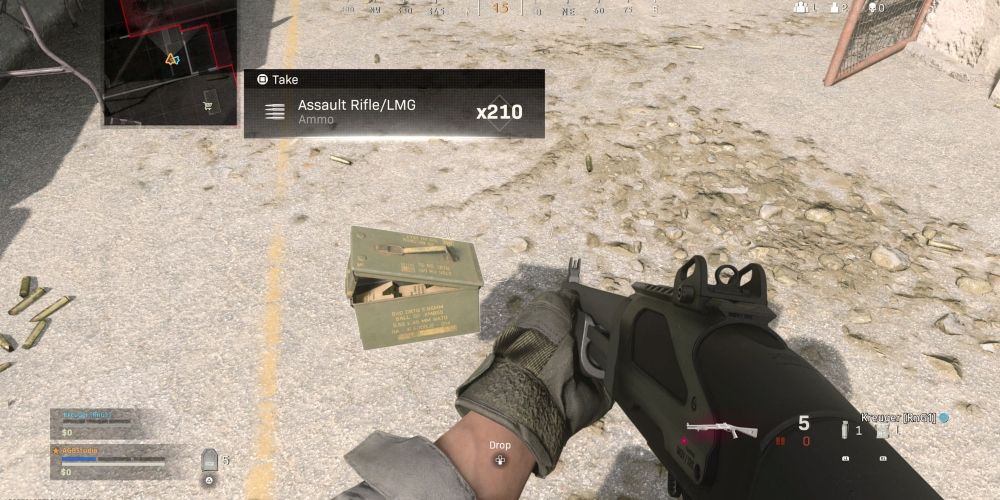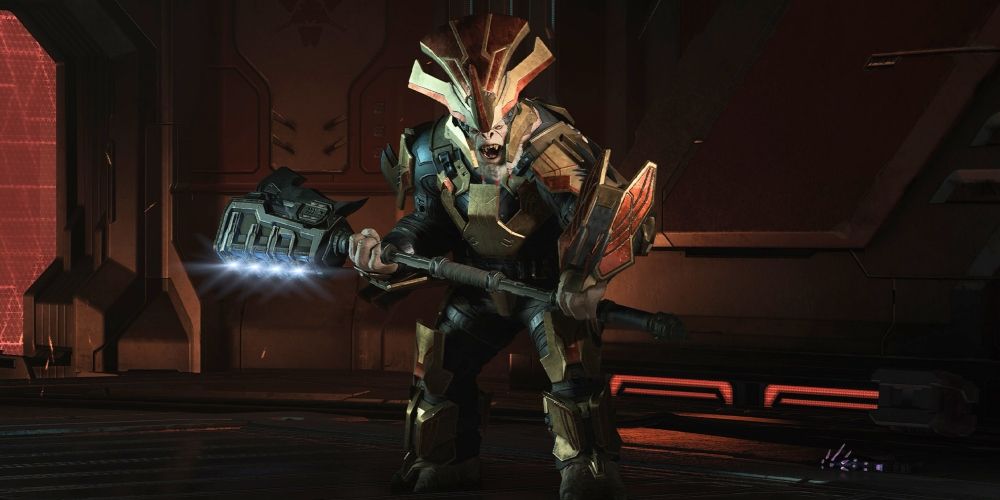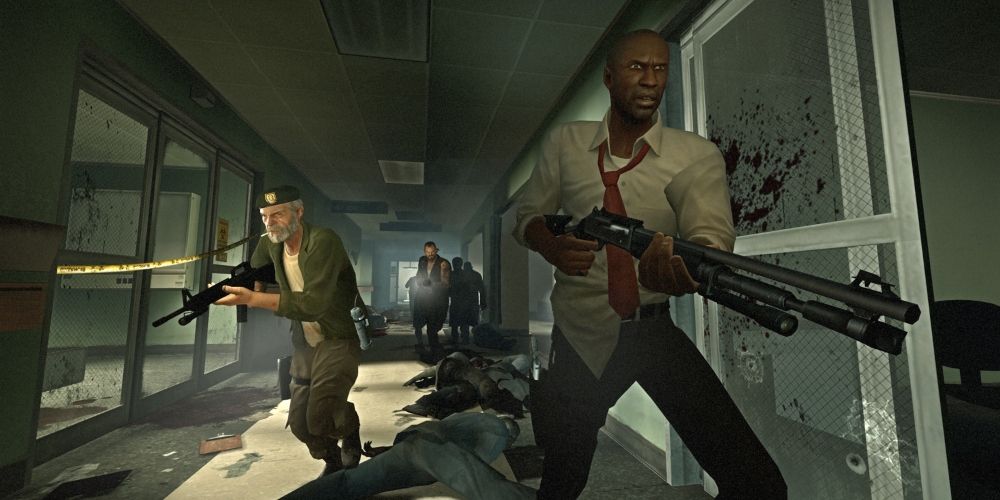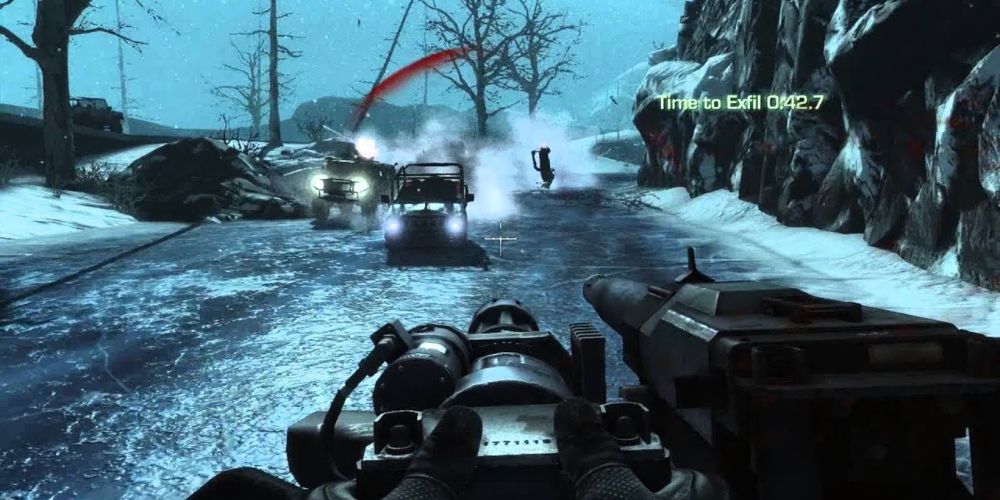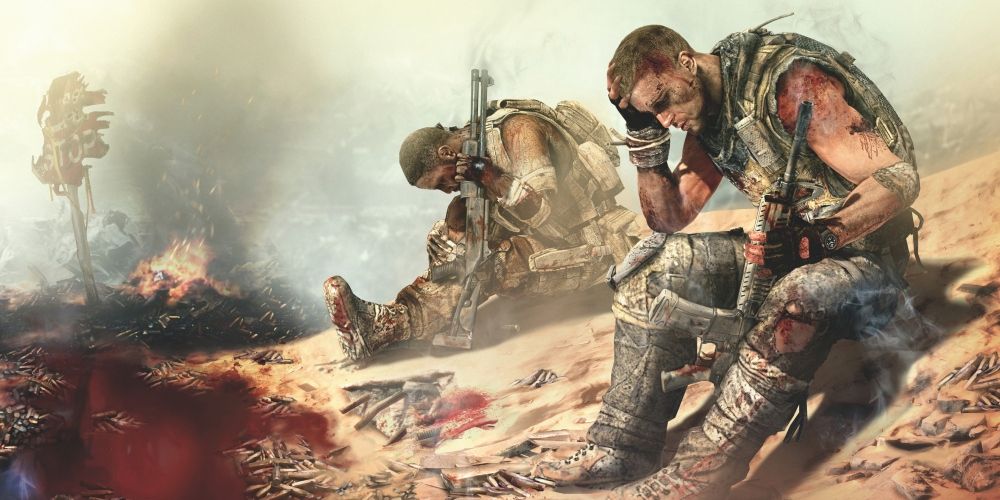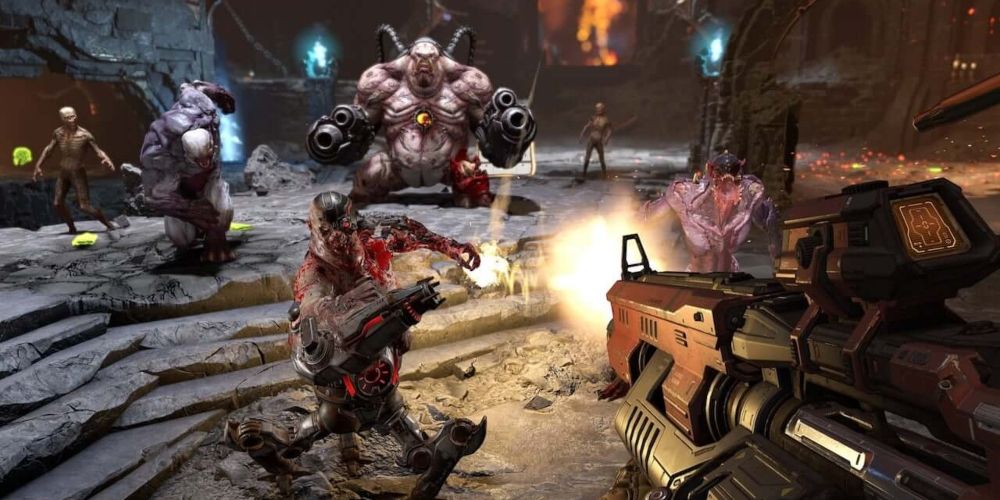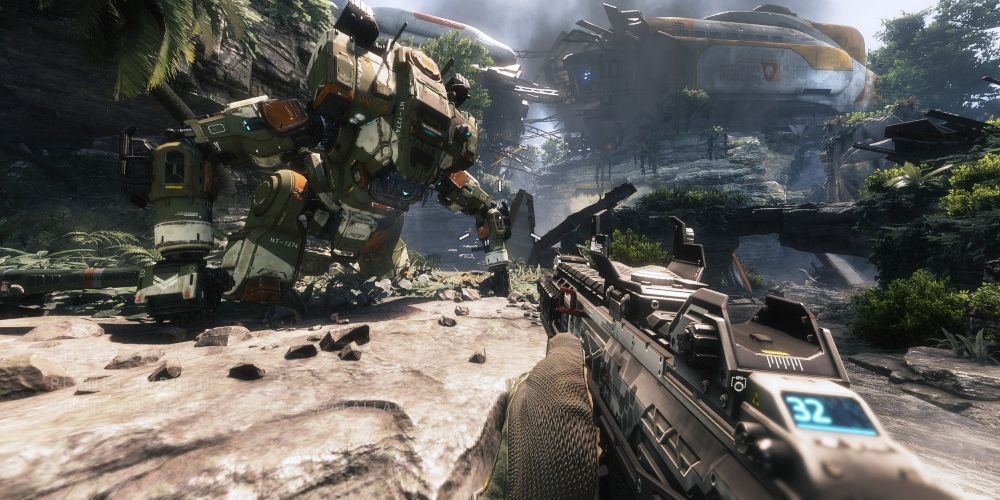The first-person shooter genre of video games is perhaps the most popular in the world. FPS games cast the player as a soldier on the front lines of battle, watching through their character's eyes as they wage war on armies of foes, with an extensive focus on gunplay.
The genre is by no means homogenous, containing franchises as varied as Call of Duty, DOOM and SUPERHOT — all with their own unique features and selling points. Nonetheless, certain tropes in both the story and gameplay tend to show up again and again, leading some gamers to grow tired of them and wish more games in the genre tried something new.
10 A Perfect Steady Drip Of Ammunition
One of the most common and universal gameplay elements in FPS games is the use of limited ammunition. This forces players to conserve their bullets rather than just wildly fire. It can also create a sense of desperation when supplies run low, and the enemies seem endless.
In many games, this has been refined to a science, with players finding more rounds just as they come onto their last clip. However, it's become predictable to some as a result. Some players miss the older ways of restocking from games such as Halo, where players were very likely to run out of shots and would need to pick up a new, sub-optimal weapon just to survive a gunfight.
9 Powerful Enemies And Bosses Just Being Bullet Sponges
Low health for both the player and enemies is common in first-person shooters, and most entities go down in a few rounds. In many games, significant enemies or bosses are signified by their ability to take a much higher amount of damage, leading to the pejorative nickname "Bullet Sponges."
Simply unloading more bullets into an enemy doesn't make for particularly engaging gameplay. The raid bosses in games like Destiny have proven there's room in FPS games for more creative and varied boss mechanics, something players want more of.
8 Games Trying To Recreate Left 4 Dead
One of the most popular first-person shooter games is Left 4 Dead, a player-vs-zombie experience. Four survivors are in a mobile running battle against hordes of common Infected and a smaller number of highly-dangerous Special enemies. The game's randomization, tight design, and focus on cooperation has rendered it a gaming staple.
Many games have attempted repeat Left 4 Dead's success, including World War Z, Aliens: Fireteam Elite, and Back 4 Blood. Players love Left 4 Dead for its uniqueness. Developing a copy misses the mark, and none of the attempts to capture the magic have ever truly succeeded.
7 Mandatory Turret Sequences
After players have had to slog their way through dozens of enemy soldiers, many games like to reward players with a sequence where they get to sit on a turret and blast away at advancing foes. Often dealing high-damage and possessing infinite ammunition, they prove a distinct change from the weaker and more limited conventional weaponry.
However, with turret sequences appearing so often, some players feel it's a tedious stretch of clicking at things until they die. As one option in a static defense section, turrets can be more enjoyable. But as a forced option, they often fall flat.
6 An Uncritical Glorification Of War And Violence
FPS games are violent, and due to their gun-heavy premise, they are often military in nature. This's not a problem on its own, but some players take umbrage with how the genre as a whole tends to take a wholly uncritical view on war and military action, with the risk of glorifying it.
Games like Metal Gear Solid and Fallout have shown that gamers are plenty happy to enjoy games that take a more critical or deconstructive view of warfare. The first-person shooter genre has even birthed deconstructive and compelling games like Spec Ops: The Line, Battlefield 1, and Halo 4. As most games don't feel a need to pass commentary on their subject matter, some players find it tiresome.
5 Soldiers Lacking The Ability To Swim
A common topic for players to snark about in all video games, especially FPS games, is the seeming inability for most protagonists to swim. Water is often used as a boundary or an obstacle, with characters simply dying when they touch it or go too far into its depths.
While far from a dooming flaw, the trope's prevalance in the FPS genre has led many fans to conclude that the gaming world's best soldiers have never taken swimming lessons. A game that accommodated swimming and waterborne combat would be a genuine game-changer. In the meantime, they could at least find something else to ring maps with.
4 Overpowered Melee Combat
As shooters, FPS games tend to focus heavily on their gunplay. They typically give players a melee option, often in the form of a knife attack or a simple punch. It's common for this attack to deal incredibly high damage — dropping enemies in one or two hits — rewarding player's efforts to get close to enemies.
Aside from the oddness of a punch dealing more damage than a supersonic round, this trope can result in a disruptive playstyle where some players simply rush all their foes and knife them. Games like Halo often see heavily-armed soldiers simply trying to batter each other into submission — something which can be reduced with toned-down melee damage.
3 A Horde Survival Mode
One of the more common gameplay modes in first-person shooters is a form of horde survival. The players have a mildly-defensible area and some weapons. Endless waves of enemies spawn in, and the players simply hold out for as long as they can against increasingly insurmountable odds.
These modes are by no means bad or disliked, but between Halo's Firefight, Call of Duty's Zombies, DOOM Eternal's Horde mode, and many more, its inclusion can verge on the cliche. Some players hope for variations on the formula, such as objectives to complete even as more and more enemies spawn in.
2 A Super Soldier Protagonist
To justify a single player character taking on hundreds of foes — often without allied support — first-person shooters often cast them as a super soldier of some sort. Even if not actually enhanced to a superhuman standard like Halo's Master Chief, it's common for FPS protagonists to be top-of-the-line special forces who are accustomed to facing impossible odds.
Other games, including in the FPS genre, prove players are happy controlling more mundane protagonists. Left 4 Dead stars four ordinary lucky survivors, Bioshock Infinite's Booker DeWitt is simply an ex-soldier, and Half-Life's Gordon Freeman is a wrench-armed scientist. Despite this, many FPS games insist they can't be fun without some elite, top-class main character.
1 Levels Made Up Of Linear Corridors
Linearity vs freedom has always been a hot-button topic in game design, with proponents and detractors of both approaches. With the increased technical demand of modern games, FPS games have leaned towards linearity. Even when a player appears to be in a wide open space, they only have one direction to go: forwards.
Many games have enough fun to hide it, but some players have noticed modern FPS games tend to be straight line corridors broken up by cutscenes and the ends of levels. Even without going full open-world, some hope FPS games can risk creating multiple paths, or wide-open spaces for players to explore while contained in their levels.


